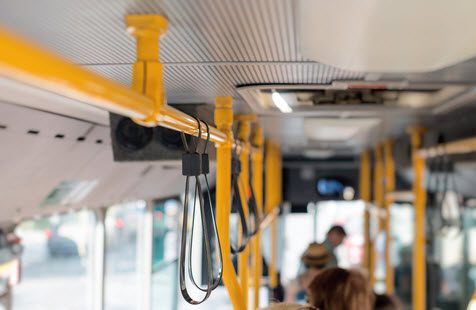Largely because they operate at very odd hours, tour bus drivers are often dangerously fatigued. Regardless of how much sleep they do or do not get during normal rest hours, people are naturally drowsy late at night, shortly after lunch, and early in the morning. This is a Florida resident’s circadian rhythm and it very rarely changes.
New rules take effect in 2018 which apply to all bus operators who drive vehicles designed to transport more than sixteen not-for-profit passengers (like school or church groups) and nine people for-profit (intercity and tour busses). These laws control hours of service and mandatory rest periods.
These two items form the basis for both negligence and negligence per se damage claims in tour bus crash cases.
First Party Liability in Florida Tour Bus Accidents
Tour bus drivers, taxi drivers, truck drivers, and other commercial operators are common carriers in Florida and most other states. So, they have a high duty of care that borders on an insurer of safe conduct for their passengers. In contrast, noncommercial drivers in Florida usually have a duty of reasonable care. Basically, they must only worry about following “the rules of the road.”
The higher duty in tour bus crash cases makes it easier to establish all five elements of a negligence case, which are:
- Duty: The high duty applies to all commercial drivers, regardless of experience, age, or drivers’ license status.
- Breach: In negligence claims as in life itself, it is easier to fall below a high standard than a lower one. Legally, a jury might excuse slight fatigue or drowsiness in a noncommercial driver, but not in a tour bus operator directly entrusted with dozens of lives.
- Factual Cause: This element is also called “but-for” causation. A victim/plaintiff must establish that the wreck would not have occurred “but for” the tortfeasor’s (negligent driver’s) fatigue or carelessness.
- Proximate Cause: There must be a direct relationship between the negligence and the victim/plaintiff’s damages.
- Damages: Victim/plaintiffs must sustain physical injuries to recover damages. If their injuries are severe, they are also entitled to noneconomic damages for items like pain and suffering.
Victim/plaintiffs must establish negligence by a preponderance of the evidence, which means more likely than not.
If the tortfeasor violated one of the HOS (hours of service) laws at either the state or federal level, the tortfeasor may be liable for damages as a matter of law if that infraction substantially caused the damages. In some cases, negligence per se is only a strong presumption of negligence.
The federal Electronic Logging Device mandate has made it easier to obtain evidence in negligence per se cases. These devices are linked to the vehicle’s ignition system and automatically record hours of operation. Previously, victim/plaintiffs had to rely on paper log books, which were rather easy to fabricate or alter.
Third Party Liability in Florida Tour Bus Wrecks
Standard W2 workers, temporary employees who technically work for a job search firm, independent contractors, and even some unpaid volunteers are all employees in a negligence case, so the respondeat superior rule applies. Under this doctrine, an employer is legally responsible for the negligent acts its employees commit during the course and scope of their employment.
The course and scope prong is also very broadly interpreted. In general, any employee who performs any service that benefits the employer in any way is acting within the course and scope of employment.
Count on Assertive Attorneys
Tour bus drivers operate under special legal rules. For a free consultation with an experienced personal injury lawyer in Brandon, contact Reed & Reed. We have four area offices (St. Petersburg, Lakeland, Tampa, and Clearwater).
Resource:
fmcsa.dot.gov/hours-service/elds/electronic-logging-devices




